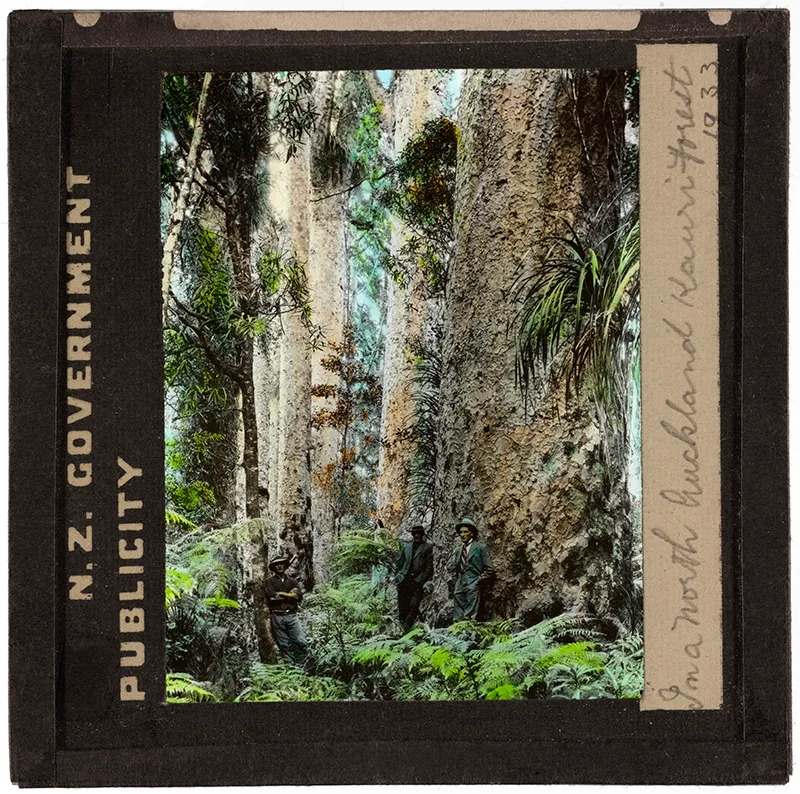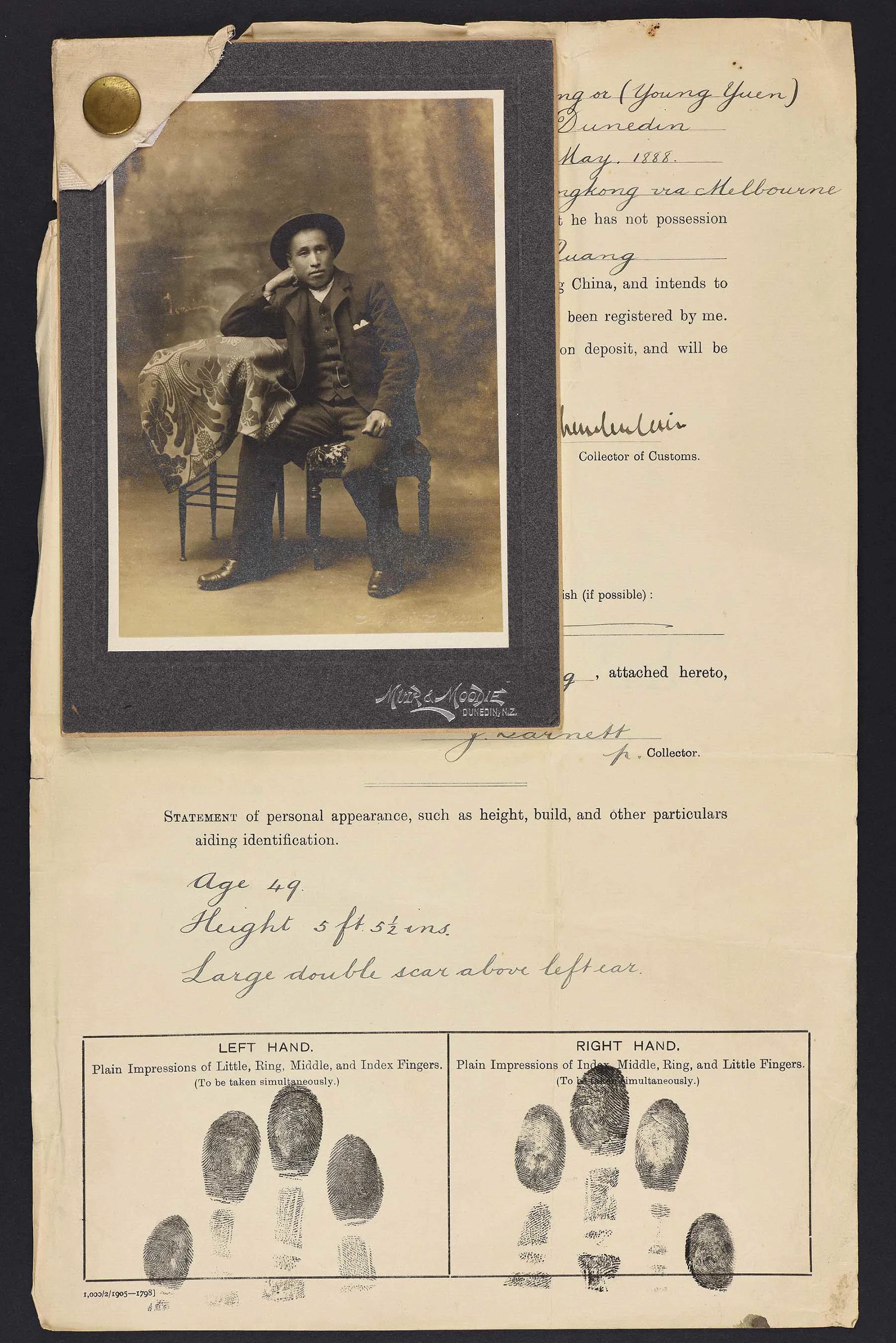Te kawe i ngā pūranga ki te iwi mā te whakamatihiko
Taking archives to the people with digitisation
Learn more about what our digitisation project team Te Maeatanga achieved and what records you can now access online.
Digitisation at Te Rua Mahara o te Kāwanatanga Archives New Zealand
Digitisation was carried out across the country in Auckland, Wellington, Christchurch and Dunedin. Between 2021 and 2023, our Te Maeatanga (Digitisation) team digitised over 878,000 images. We also made more than 5 million new images available for you to see online.
During this time, we added over 6.3 million images to the Government Digital Archive. This ensures we protect, preserve and provide you with access to digital information. We use a range of tools and technology to deposit digital records into the archives.
Read more about the tools and technology that make up the Government Digital Archive
Our holdings are diverse, and this is reflected in what was digitised. Among the wide range of images now available, there are:
mental health patient casebooks
Waikato Immigration Scheme registers
school building and site files
Deeds Register volumes for land deeds
statutory branch registered maps
hospital registers of admissions and discharges
reading room registers
New Zealand Police Gazettes
Chinese poll tax certificates
Canterbury Provincial Government papers
National Publicity Studio photographs
Suffrage Centennial Year Trust project files
Canterbury Association correspondence, and more.
From descriptions of persons wanted in the New Zealand Police Gazette, to picturesque photos promoting Aotearoa to the world, you can now view a variety of records anytime and anywhere.
Why we digitised records
Digitisation makes records more accessible
Digitised items are available via Collections search so you can look at them on a mobile device or computer.
Digitisation preserves records and taonga
Physical archives can get damaged or deteriorate over time, and some of our holdings are almost 200 years old. Digitisation protects our records and ensures people can access the taonga we hold now and in the future.
Digitisation helps people connect with whānau
The Te Maeatanga team digitised the Chinese poll tax certificates held in our Wellington repository. These bear the names, ages and birthplaces of Chinese immigrants between 1888 and 1930, and their photographs or fingerprints. Each one can unlock powerful stories of adversity and bravery, connecting Chinese New Zealanders with their ancestors. Digitisation connects all of us with our shared history.
Find out more about the digitisation of the Chinese poll tax certificates
Digitisation by the numbers
Between 28 February 2021 and 2023, Te Maeatanga reached the following milestones.
What we digitised
-
Read a text version of the Digitisation by the numbers infographic
Digitisation by the numbers
Number of digitised images
318,308 images were digitised between 28 February 2021 and 1 March 2022.
559, 938 images were digitised between 1 March 2022 and 28 February 2023.
Number of images ingested into the Government Digital Archive (GDA)
5,219,664 images were ingested into (added to) the GDA 28 February 2021 and 1 March 2022. This includes a large number of probates ingested from October to November 2021.
1,135,380 images were ingested into the GDA between 1 March 2022 and 28 February 2023.
Number of images available to the public
4,633,346 images were made available to the public between 28 February 2021 and 1 March 2022.
599, 356 images made available to the public between 1 March 2022 and 28 February 2023.
National Publicity Studio photographs
2,521 National Publicity Studio photograph images were digitised between 1 March 2022 and 28 February 2023.
Police Gazettes
39,299 Police Gazette images were digitised between 1 March 2022 and 28 February 2023.
Suffragette Centenary
27,019 Suffrage Centennial Year Trust images were digitised between 1 March 2022 and 28 February 2023.
Poll tax records
3,456 poll tax record images were digitised between 1 March 2022 and 28 February 2023.
Reading Room Registers
8,945 reading room register images were digitised between 1 March 2022 and 28 February 2023.
Statutory Branch Registered Maps
2,017 statutory branch registered maps images were digitised between 1 March 2022 and 28 February 2023.
We digitised over 2,500 National Publicity Studio photographs
This series of photographic slides contains images used to promote New Zealand to international tourists from around 1890 to 1910. Showcasing the splendour of Aotearoa’s scenery and culture, these images feature mountains, forests, farmlands and more.
View the series of photographic slides on Collections search
We digitised over 39,000 Police Gazette images
Published for over 100 years, the New Zealand Police Gazette was a tool used by police to communicate information and updates to staff across the country. It included mugshots of discharged prisoners, descriptions of crimes, missing people, wanted offenders and lost and found property.
View New Zealand Police Gazette records on Collections search
We digitised over 27,000 Suffrage Centennial Year Trust images
Operating from 1992 to 1994, the Suffrage Centennial Year Trust was responsible for organising activities celebrating 100 years of women’s suffrage in New Zealand. A variety of events took place – including art exhibitions, performances and talks. Many special projects such as quilts, gardens and publications were also completed.
View the series of Suffrage Centennial Year Trust project files on Collections search
We digitised all 3,465 poll tax records images
In 1881, the New Zealand government passed the Chinese Immigrants Act. Amongst other conditions, which no other ethnic groups were subject to, every Chinese person had to pay a £10 fee or poll tax on arrival. This increased to £100 in 1896 — the equivalent of $20,000 NZD in current times. The poll tax certificates were issued as proof that each person had paid their fees.
It wasn't until 1944 that the legislation was repealed — long after other countries had abandoned similar measures. In 2002 the New Zealand government officially apologised to the Chinese community for the injustice of the tax. The digitisation of these records is now complete.
View the series of Chinese poll tax certificates on Collections search
We digitised over 2,000 statutory branch registered maps
This series of around 2,000 maps were used by the Department of Lands and Survey as reference tools for their work. They’re some of the earliest and most diverse maps in our holdings. Although they are held in Wellington, the maps cover all parts of Aotearoa. The digitisation of statutory branch registered maps is now complete.
View the series of statutory branch maps on Collections search
We digitised over 8,900 reading room registers images
Dating from the 19th and early 20th centuries, these registers show how government agencies responded to complaints, requests and queries over decades. You can use them to find and research references to many records from this period. In some cases, they are the only surviving records documenting actions of government – particularly for agencies impacted by the 1952 Hope Gibbons fire.
















